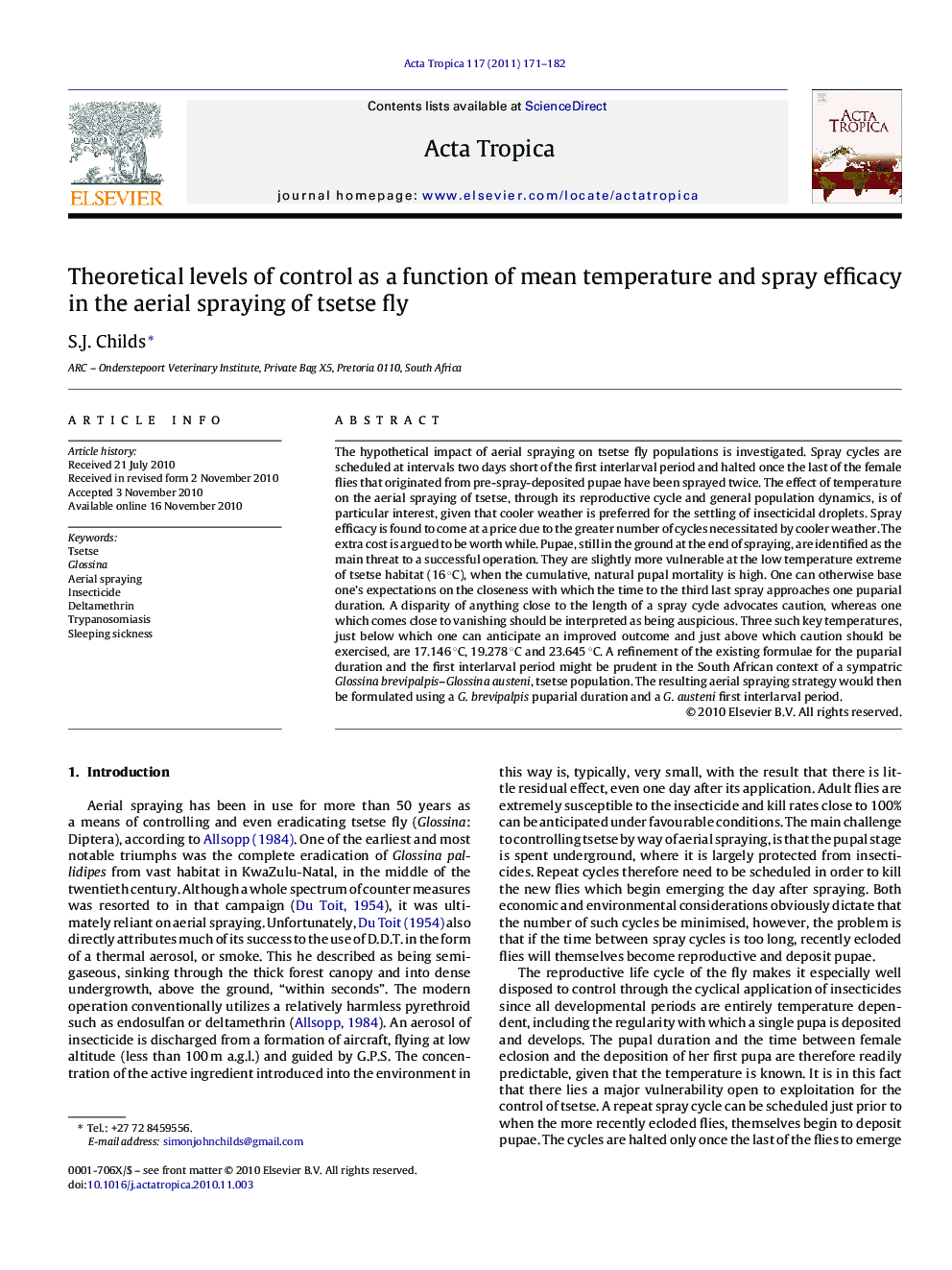| کد مقاله | کد نشریه | سال انتشار | مقاله انگلیسی | نسخه تمام متن |
|---|---|---|---|---|
| 6128364 | 1221443 | 2011 | 12 صفحه PDF | دانلود رایگان |
عنوان انگلیسی مقاله ISI
Theoretical levels of control as a function of mean temperature and spray efficacy in the aerial spraying of tsetse fly
دانلود مقاله + سفارش ترجمه
دانلود مقاله ISI انگلیسی
رایگان برای ایرانیان
کلمات کلیدی
موضوعات مرتبط
علوم زیستی و بیوفناوری
ایمنی شناسی و میکروب شناسی
انگل شناسی
پیش نمایش صفحه اول مقاله

چکیده انگلیسی
ⶠPupae, still in the ground at the end of spraying, are identified as the main threat to successful control by aerial spraying. They are, far-and-away, predominantly the immediate descendants of pre-spray-deposited pupae, which ecloded during spraying. ⶠThe constant-temperature formula for flies ecloding from such female pupae, ηγ2Nβâtâ£=Ï(sâ1)+1Ï(sâ1)+Ï0âi=0floortâ£âÏ0âÏ1â1/Ï2eâδ(Ï0+Ï1+iÏ2,T)Ï(floor{(tâ£âÏ0)/Ï}âfloor{(tâ£âÏ0âÏ1âiÏ2)/Ï})[1âH(tâ£â2Ï0âÏ1âiÏ2)]H(tâ£âÏ0âÏ1), is a good approximation of the outcome of a spraying operation, given the kind of kill rates which can be expected. ⶠOne can base one's expectations on the closeness with which the time to the third-last spray cycle approaches one puparial duration. ⶠThree such key temperatures, just below which one can anticipate an improved outcome and just above which caution should be exercised, are 17.146 °C, 19.278 °C and 23.645 °C. ⶠA refinement of the existing formulae for the puparial duration and the first interlarval period might be prudent in the South African context of a sympatric Glossina brevipalpis-G. austeni, tsetse population.
ناشر
Database: Elsevier - ScienceDirect (ساینس دایرکت)
Journal: Acta Tropica - Volume 117, Issue 3, March 2011, Pages 171-182
Journal: Acta Tropica - Volume 117, Issue 3, March 2011, Pages 171-182
نویسندگان
S.J. Childs,